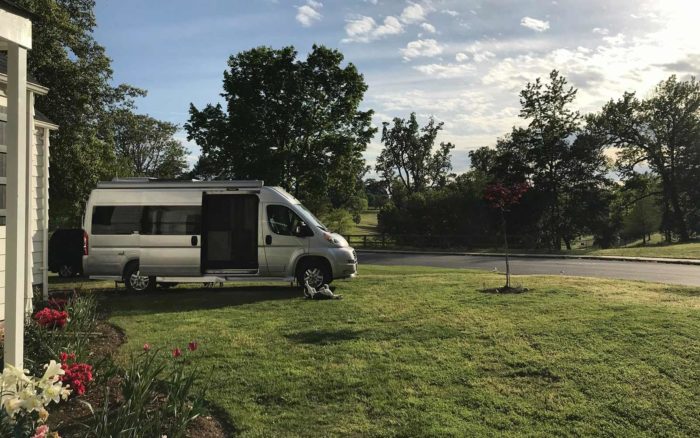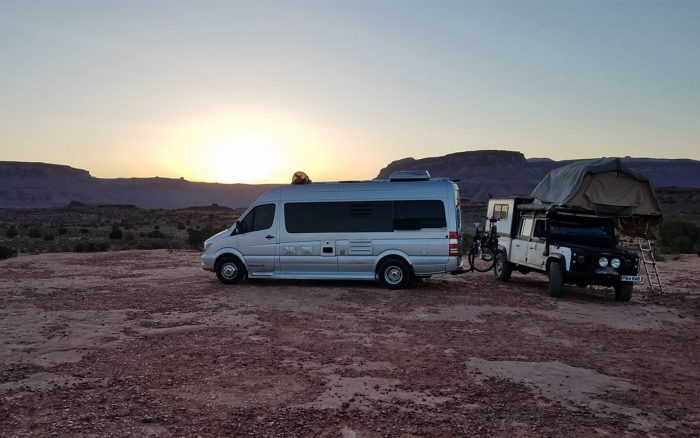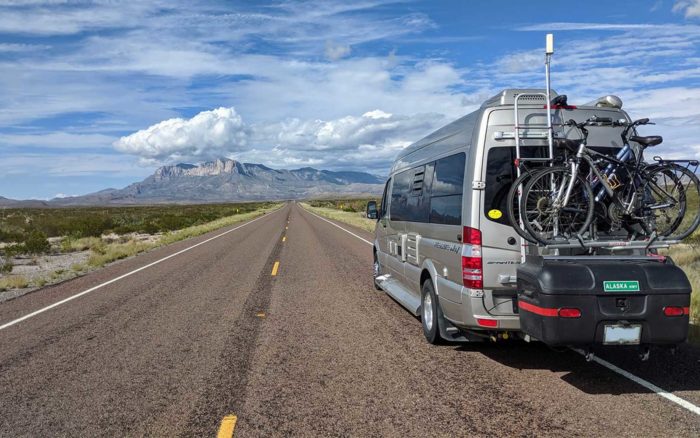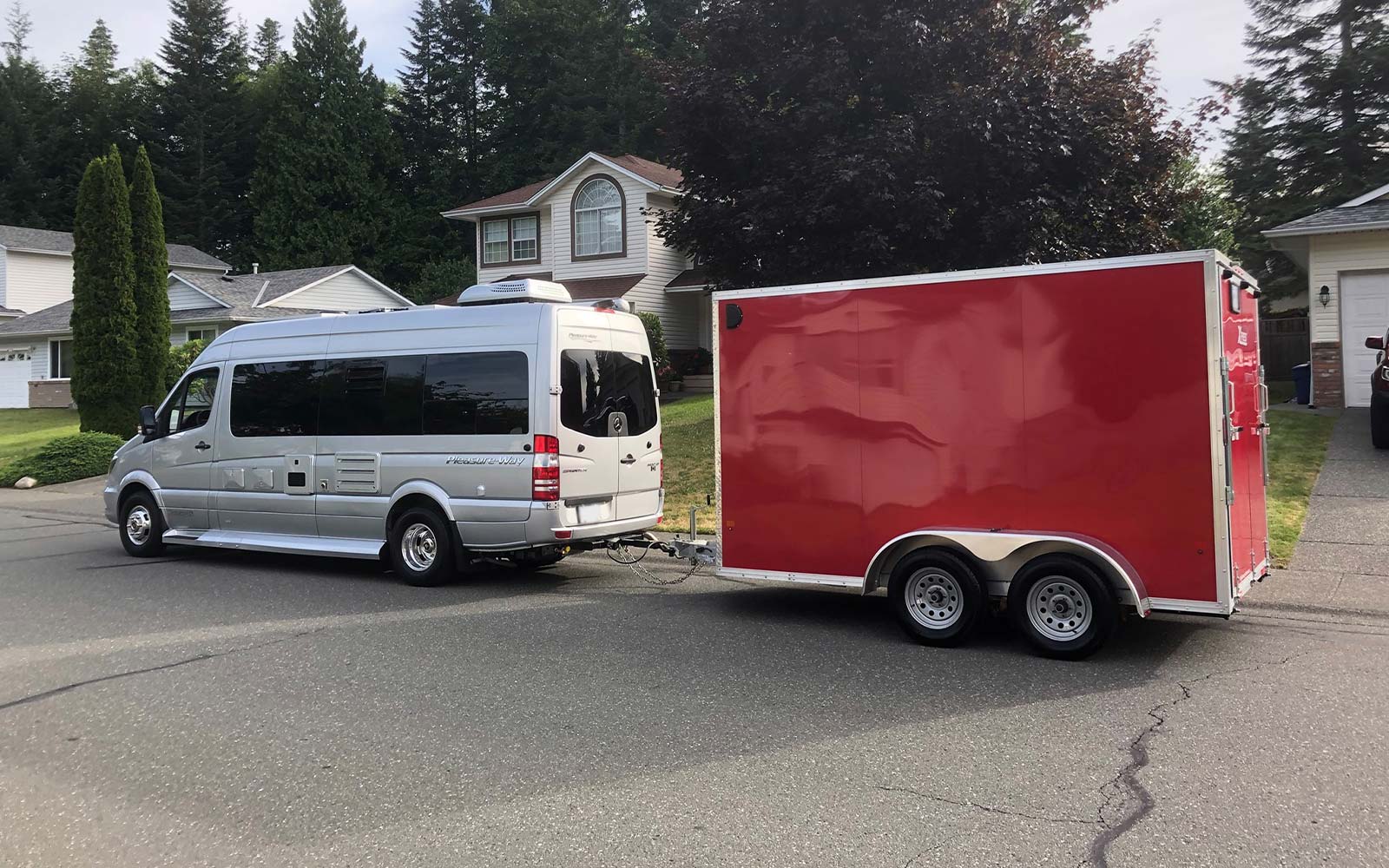
Pleasure-Way Class B motorhomes are versatile and nimble. Given their compact size and maneuverability, you can still tow smaller items like boats, jet skis, ATVs, and even snowmobiles. It’s all about knowing your rig’s weights and capacity. This article will cover how to drive when towing, and the benefits of towing with a Pleasure-Way motorhome.
Some considerations
Before you start towing, there are some things you need to learn and know how to use. Any vehicle with towing capability is tested and rated, and those ratings are your guide to what’s safe to tow and what’s not. So let’s go over the terms and what they mean. But if you can’t immediately remember them, a visit to your dealer is always a good starting point.
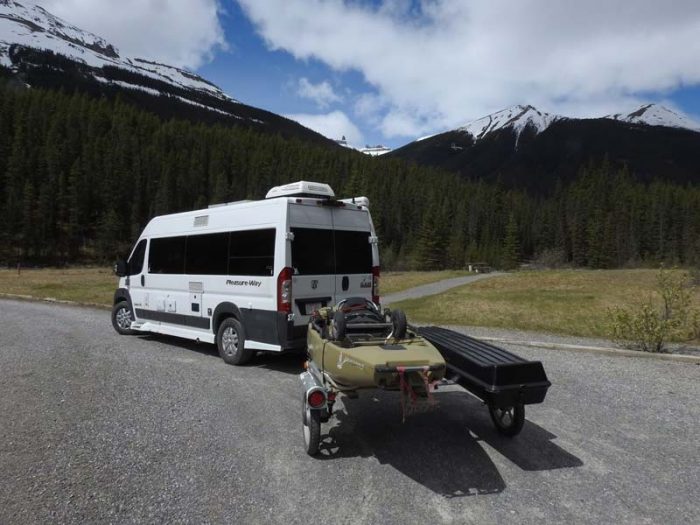
Terms you should know:
‘GVWR’ – Gross Vehicle Weight Rating
This is the maximum allowable loaded weight of your Pleasure-Way, as set by the manufacturer. GVWR includes the weight of passengers, cargo, and the vehicle itself. Exceeding the GVWR poses significant risks as it makes the vehicle difficult to control, slow, or stop.
‘GCWR’ – Gross Combined Weight Rating
Refers to the combined weight of your Pleasure-Way and the loaded trailer.
‘OCCC’ – Occupant and Cargo Carrying Capacity
The Occupant and Cargo Carrying Capacity is the maximum allowable weight for everything onboard the unit – people, pets, food, tools, full water, and LP tanks plus personal belongings.
‘TW’ – Tongue Weight
Refers to the downward force that the tongue of the trailer exerts on the hitch that is connected to the vehicle.

Benefits of towing with your Pleasure-Way
One of the advantages of your Pleasure-Way Class B RV is its nimble size. There’s no worry about a special driver’s license, a huge motorhome to maneuver and park, and all the costs involved with fueling and maintaining it.
That makes them agile enough to fit in the city just as well as they do at a national park or campground. Towing a lightweight cargo pod or trailer behind your coach is naturally easier. Plus, how great would it feel to head to the lake with your jet ski in tow, or surfboards ready?

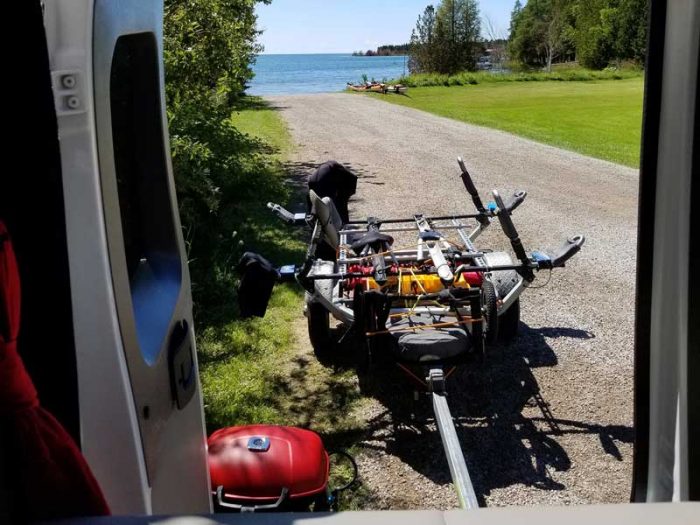
When towing with a Pleasure-Way motorhome, here’s a quick reference guide for each model:
| Model | Chassis | GVWR | Tow Capacity | Tongue Weight (10% of Tow capacity) |
| Ascent TS | Mercedes-Benz Sprinter 2500 | 9,050lbs/ 4105kg | 4,880lbs/2,213kg | 488lbs/221kg |
| Plateau FL/TS | Mercedes-Benz Sprinter 3500 | 11,030lbs/ 5,003kg | 4,220lbs/1,914kg | 422lbs/191kg |
| Ontour 2.0 | Ford Transit 250 | 9,000lbs/ 4,082kg | 2,200lbs/998kg | 220lbs/98kg |
| Ontour 2.2 | Ford Transit 350 | 10,360lbs/ 4,699kg | 2,240lbs/ 1016kg | 224lbs/101kg |
| Tofino | RamProMaster 1500 | 8,550lbs/ 3,879kg | 2,950lbs/1,338kg | 295lbs/133kg |
| Recon 4×4 | Mercedes-Benz Sprinter 2500 4×4 Chassis | 9,050lbs/ 4,100kg | 5,000lbs/2,268kg | 500lbs/226kg |
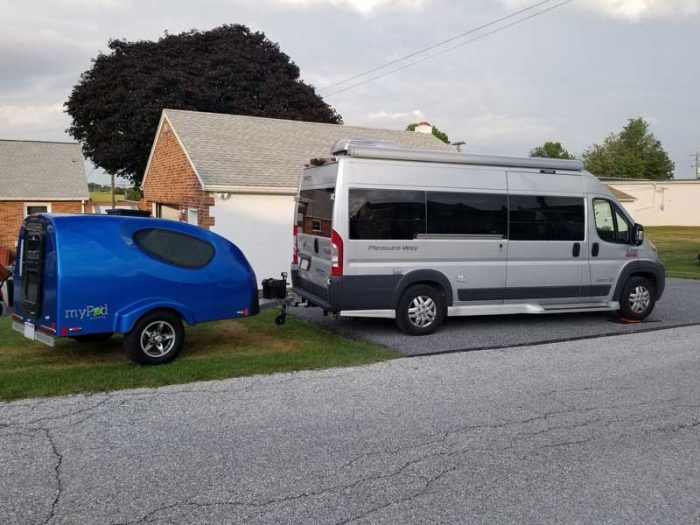
If numbers are not your strong suit
Never underestimate the value of a conversation. Speak with a representative you can trust, schedule a visit to your local dealer, and be sure to bring any questions and ideas you may have. Find them with our helpful locator.
Before you head out
The last step before you hit the road is to practice towing in a safe place. Head to a vacant parking lot and master wide and sharp turns; you’ll want to know how to do both. Practice backing into a parking spot and keep in mind that each turn of the steering wheel has an opposite reaction on the trailer you’re towing.

Helpful safety features for secure towing
Take advantage of these safety driving features that come standard in the Mercedes-Benz and Ford Transit chassis, including:
- Rear Camera View System
The camera monitors your surroundings when in gear, giving you full view of your trailer to ensure a safer way to back in or out of a space. Also handy when attempting to attach your trailer to the hitch.
- Side Wind Stabilization & Crosswind Assist
These advanced features work by carefully applying the brakes on one side of the vehicle to reduce the effect of a side wind gust on the vehicle’s path.
- Lane Keeping Assist
Detects when you’re starting to stray from your driving lane and alerts you via a vibration on the wheel. If you don’t respond, it can apply the brakes to help you return to your lane.
Pro Tip
Blind Spot Assist
This Transit chassis feature monitors the areas along the side and rear of the coach and warns you if changing lanes would be dangerous, via a visual and audio warning. You can adjust your Blind Spot Assist to include the length of your trailer.
With this guide in mind, you’re ready for the road. Pleasure-Way Motorhomes are the agile solution that makes travel easy, flexible, and fun. To learn more about the Pleasure-Way line-up, visit your nearest authorized dealership.


